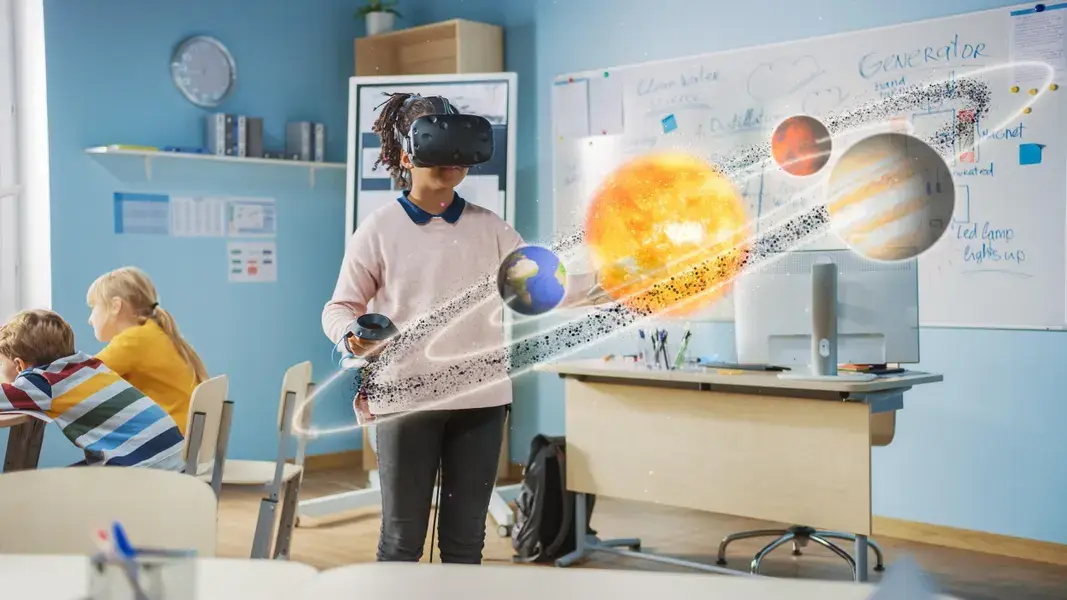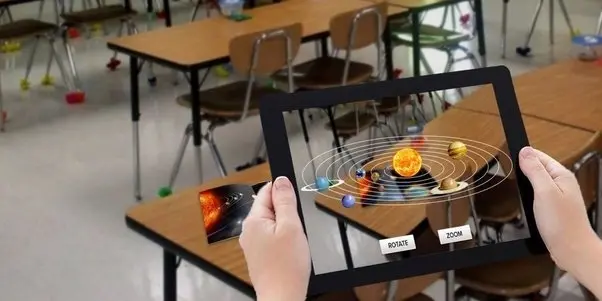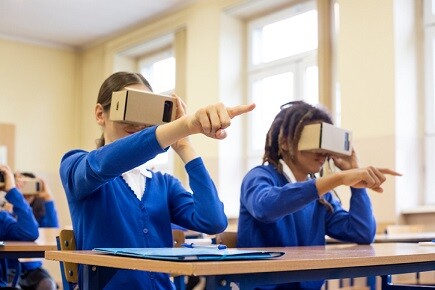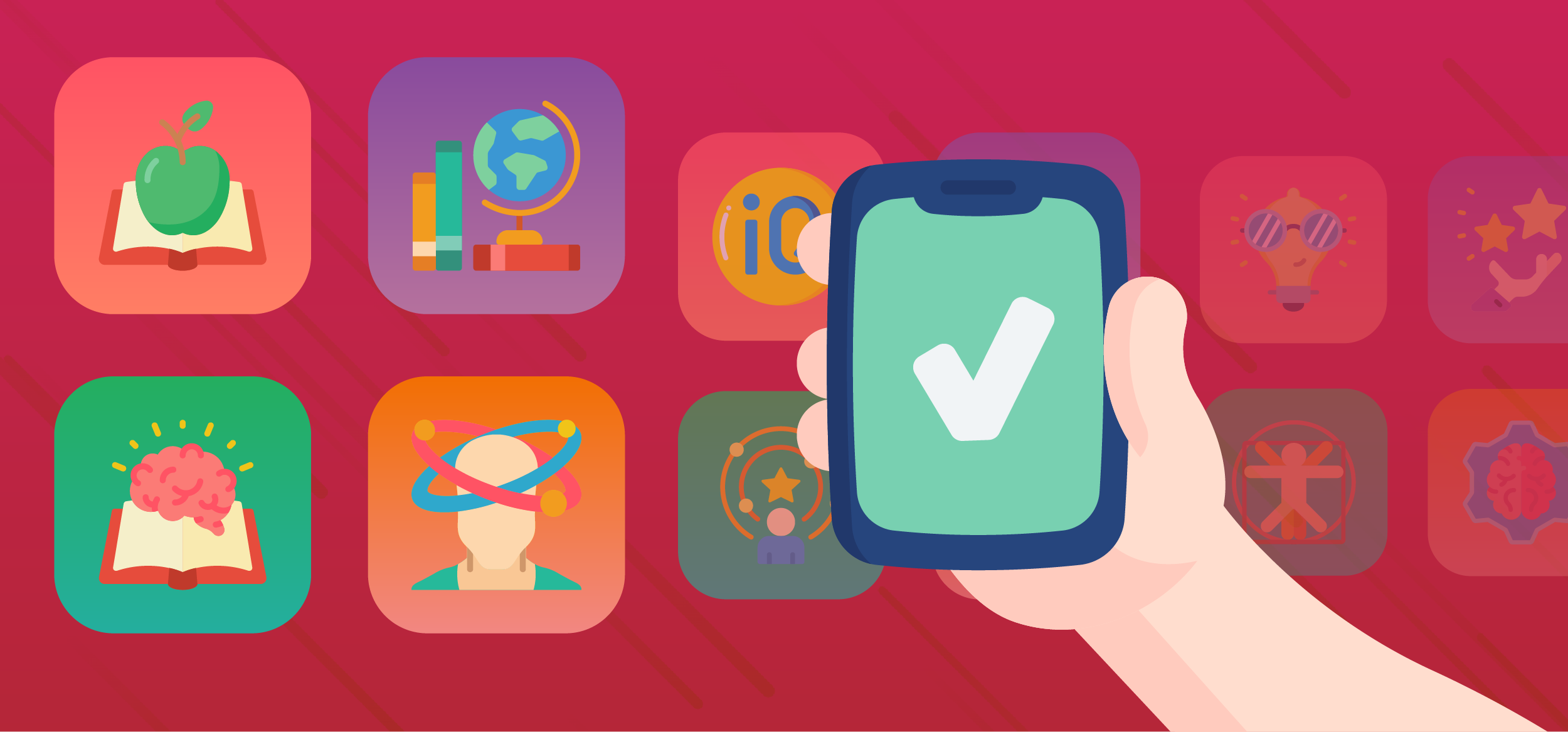What Schools Need to Know About Augmented Reality (AR) in the Classroom
Augmented Reality (AR) is revolutionizing classrooms by overlaying digital information onto the real world, enhancing learning experiences. It allows...
You must be logged in to the LATechNet portal to view additional resources.
3 min read
 Aria - LATechNet Team
:
Apr 20, 2025 6:02:21 AM
Aria - LATechNet Team
:
Apr 20, 2025 6:02:21 AM

Have you ever imagined exploring ancient Egypt, diving deep into the ocean, or stepping onto Mars—all without leaving your classroom? That's the magic of Virtual Reality (VR). VR is an exciting technology that creates realistic, interactive worlds students can explore through special headsets. By integrating such innovative technology into education, teachers can make learning adventures more engaging and memorable.
In today's digital age, embracing technology in classrooms isn't just trendy—it's essential. Students naturally connect with tech, and using tools they love boosts their curiosity and motivation. When lessons become interactive experiences, students become active participants in their learning journey. In this article, we'll delve into how VR can enhance student learning, spark engagement, and give educators new ways to inspire young minds.
Virtual reality creates immersive environments that feel so real students often forget they're actually in a classroom! By putting on a VR headset, students dive directly into interactive worlds that instantly grab their attention. In fact, research shows that VR lessons can boost student engagement by up to 80% compared to traditional teaching methods (teachng.com). Imagine students exploring ancient Egypt or walking through the human heart, actively discovering and interacting along the way. These vivid, memorable experiences make learning not just more enjoyable, but deeply engaging.
One of the biggest benefits of VR learning is improved memory and test scores. Studies show that learners retain up to 75% more information when lessons involve virtual reality (teachng.com). Additionally, a PwC study found VR training enhances performance by 40%, a benefit that can also apply directly to student learning scenarios (takeaway-reality.com). Schools integrating VR into curricula have reported noticeable improvements in exam results, revealing that students not only remember lessons better but also understand concepts more clearly.
VR isn't just about watching—it's about doing. Through interactive problem-solving scenarios, students actively participate, think critically, and collaborate with classmates. For example, Cobb County schools have successfully integrated VR into their STEM programs, allowing students to experiment, build, and solve real-world problems in virtual environments (axios.com). Whether they're tackling complex engineering tasks or exploring scientific phenomena, students develop deeper critical thinking skills by actively engaging in virtual hands-on experiences.
Teachers who've brought VR into their classrooms are overwhelmingly happy with the results. An impressive 90% of educators have noticed significant improvements in student performance and engagement after integrating virtual reality into their lessons (teachng.com). Not only are students more excited to learn, but teachers also find themselves more motivated and enthusiastic about teaching, thanks to the fresh, interactive experiences VR provides.
However, integrating VR isn't without its hurdles. Cost and accessibility can be challenging—VR gear isn't cheap, and not every school can afford it right away. Additionally, teachers often need extra training to use VR effectively. To tackle these issues, many schools begin slowly, introducing VR in stages, or partner with technology companies and IT specialists who can offer support and training, making the transition smoother and less stressful for everyone involved.
Bringing virtual reality into your classroom can feel exciting yet overwhelming. First, check if your school is ready by evaluating your budget, available space, and tech support. Choose VR equipment that's easy to use, fits your needs, and doesn't break the bank—headsets like Oculus Quest or Google Cardboard can be great starting points.
Next, build engaging lesson plans that truly immerse students. Think experiential: a history class might explore ancient Egypt virtually, or science students might dive deep into a coral reef ecosystem. Remember, VR should enhance learning, not distract from it.
Don't forget to train your teachers! Provide simple, hands-on workshops so educators feel comfortable integrating this tech. Finally, check how your students respond—ask for feedback, observe their engagement, and keep adjusting your approach to ensure the VR experience keeps getting better and better.
Getting started with virtual reality in the classroom can feel overwhelming, but LATechNet is here to make the process easy and enjoyable. With deep experience in educational IT services, LATechNet offers educators practical support for harnessing VR technology effectively. They help schools choose the right VR hardware and software that best fits their needs and budget, guiding them every step of the way.
To ensure teachers feel comfortable and confident, LATechNet provides interactive training programs designed especially for educators. These sessions help teachers understand how to integrate VR into lessons seamlessly, keeping students engaged and excited about learning.
Additionally, LATechNet gives ongoing technical support and regular maintenance, making sure everything runs smoothly. They even craft customized IT solutions, helping schools get the most out of VR to create meaningful, personalized learning experiences for every student.
Virtual reality has the amazing power to transform learning, turning regular lessons into exciting adventures that students can't wait to explore. By immersing learners in interactive, lifelike experiences, VR makes subjects more understandable and memorable, sparking curiosity in a way traditional methods often can't.
For schools aiming to stay ahead, adopting VR technology can be a key part of their digital transformation strategy. It's not just about keeping up; it's about unlocking new ways to teach, learn, and inspire. Of course, integrating VR smoothly into your classrooms might seem tricky at first. That's why teaming up with experienced IT partners, like LATechNet, can be incredibly helpful. They have the expertise to guide schools through each step, ensuring a successful and enjoyable VR experience for everyone involved.

Augmented Reality (AR) is revolutionizing classrooms by overlaying digital information onto the real world, enhancing learning experiences. It allows...

Introduction Remember when classroom technology meant overhead projectors and bulky desktop computers? We've come a long way since then! Educational...

The article discusses the transformative impact of educational technology in classrooms by 2025, highlighting tools like AI-powered tutors and...